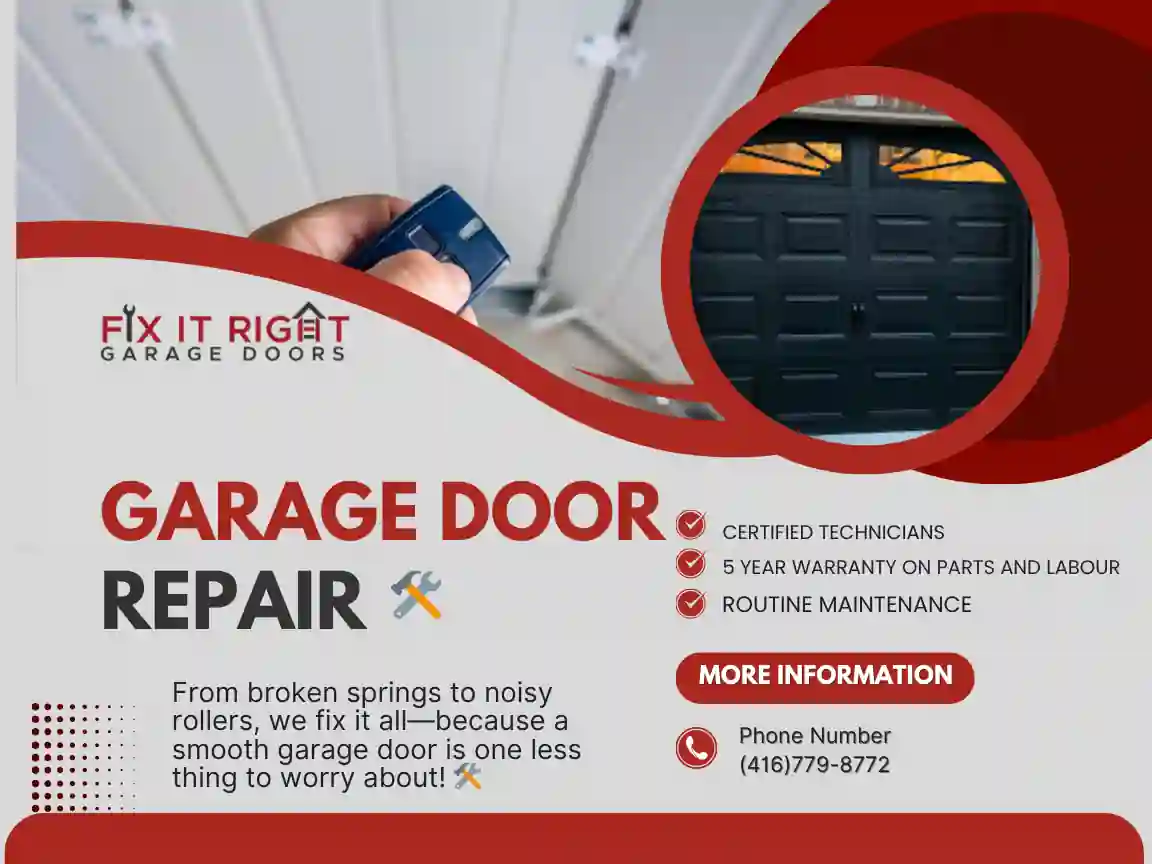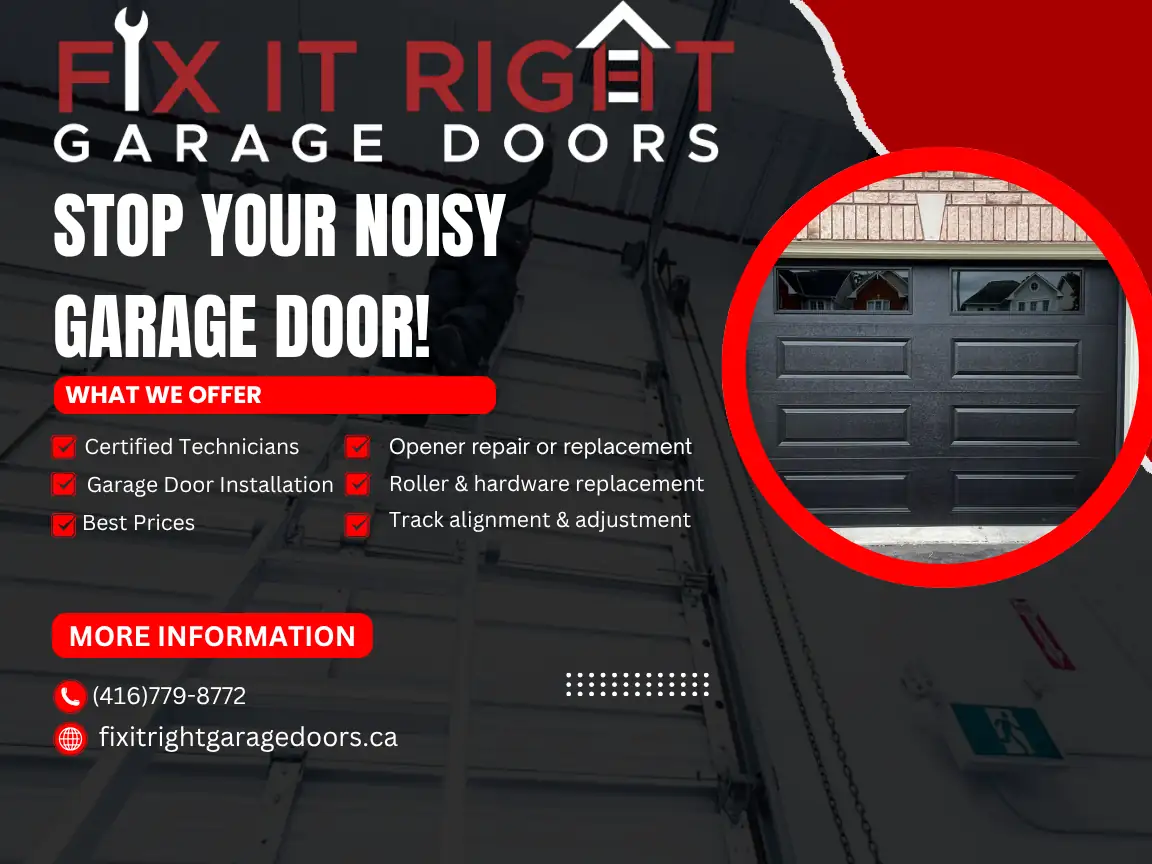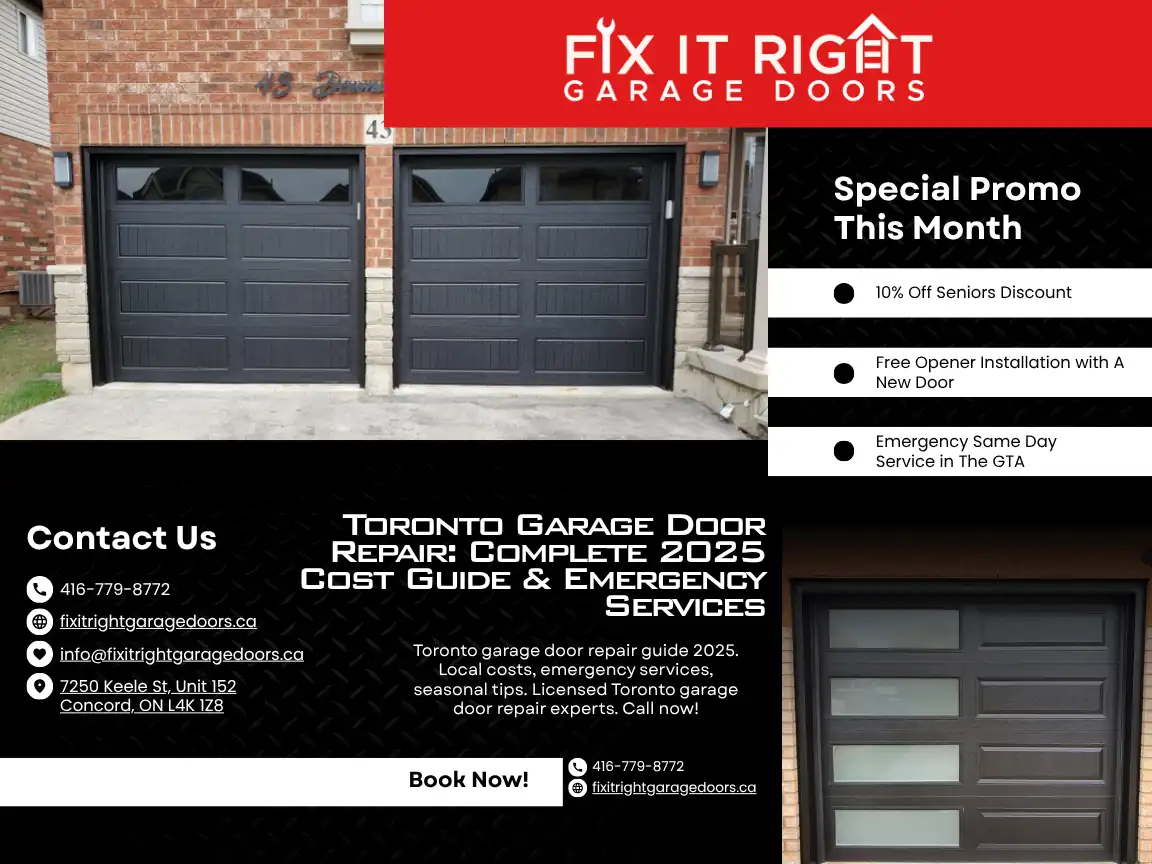Your garage door is likely the largest and heaviest moving part of your home. It’s a marvel of engineering, providing convenience, security, and a significant portion of your home’s curb appeal. We rely on it daily, often without a second thought, until something goes wrong. When it does, it can quickly become more than just an inconvenience – it can be a significant safety hazard and a security vulnerability. Knowing the 4 signs your garage door needs repair is crucial for every homeowner. Ignoring these warning signals can lead to accelerated wear and tear, costly breakdowns, or even dangerous accidents.
In this comprehensive guide, we’ll walk you through the most critical indicators that your garage door is crying out for professional attention. We’ll delve into common issues such as a broken garage door spring, problems with garage door cables, why your garage door won’t open or close fully, and the importance of addressing a noisy garage door operation. By recognizing these signs early, you can prevent minor issues from escalating into major headaches, ensuring the longevity and safe operation of your garage door system.
Why Early Detection Matters
Think of your garage door like your car. You wouldn’t ignore a check engine light, would you? Similarly, your garage door provides subtle (and sometimes not-so-subtle) cues when it’s experiencing trouble. Addressing these issues promptly not only saves you money in the long run by preventing cascading failures but, more importantly, ensures the safety of your family, pets, and property. A malfunctioning garage door can exert immense force, leading to severe injuries if it falls or closes unexpectedly.
Let’s explore the 4 signs your garage door needs repair:
Sign 1: Excessive Noise & Grinding Sounds 🔊
A smoothly operating garage door should be relatively quiet, producing only a gentle hum from the opener or a soft rumble as it moves along its tracks. If your garage door has suddenly become a noisy behemoth, producing a symphony of squeaks, grinding, scraping, or rattling, it’s a clear indicator that something is amiss. This is one of the most common and earliest 4 signs your garage door needs repair.
- Squeaking or Creaking: Often points to a lack of lubrication on the rollers, hinges, or springs. These metal-on-metal sounds indicate increased friction.
- Grinding or Scraping: This is a more concerning sound, often suggesting issues with the garage door rollers themselves (worn out, flat-spotted, or broken), or problems with the tracks (bent, misaligned, or obstructed). If rollers are binding or scraping against the tracks, it creates significant friction and undue stress on the entire system.
- Rattling: Loose nuts, bolts, or other hardware on the hinges, track brackets, or even the garage door opener mounting can cause a rattling sound as the door vibrates during operation.
- Loud Clunking or Banging: While a single loud “bang” often indicates a broken garage door spring, repetitive clunking could suggest loose components within the opener, worn-out gears, or issues with the chain/belt.
What to Check (Carefully!):
- Lubrication: First, try applying a high-quality, garage-door-specific lubricant (silicone-based or lithium grease spray) to your rollers (at the bearings/stems, not the wheels themselves if nylon), hinges, and springs. Do NOT lubricate the tracks.
- Loose Hardware: Visually inspect all nuts, bolts, and screws on hinges, track brackets, and the opener. Tighten any loose ones.
- Track Condition: Look for debris in the tracks, or any visible bends or misalignments.
Why it Needs Repair: Persistent noise, especially grinding, means components are wearing out rapidly. This friction puts extra strain on the opener motor and other parts, leading to premature failure. Ignoring a noisy garage door operation can eventually cause the door to jam, go off track, or stop working entirely.
Sign 2: Difficulty Opening or Closing (Including “Garage Door Won’t Open or Close Fully”) 🛑
Your garage door should open and close smoothly, fully, and without hesitation at the press of a button. If it struggles, stops mid-way, or, crucially, your garage door won’t open or close fully, it’s a major red flag and one of the most critical 4 signs your garage door needs repair.
- Door Stops Mid-Way/Doesn’t Go All the Way Up or Down:
- Safety Sensors: The most common culprit if the door stops and reverses, or won’t move down at all, is an obstruction or misalignment of the safety sensors near the bottom of the tracks. Even a tiny cobweb can break the invisible beam.
- Travel Limits: The “travel limits” on your garage door opener tell it how far to open and close. If these settings are off, the door might stop short, or go too far and hit the floor/header.
- Force Settings: The “force settings” dictate how much power the opener uses. If the door is binding, or has increased resistance, the opener might think it’s hitting an obstruction and reverse prematurely.
- Door is Heavy or Manual Operation is Difficult: This is a strong indicator of a broken garage door spring (torsion or extension). Springs counterbalance the door’s weight. If one or more are broken, the opener struggles immensely, or the door will feel incredibly heavy when you try to lift it manually. This is a severe safety hazard.
- Door Jams or Binds: The door might stick at certain points or bind within the tracks. This can be caused by bent tracks, worn rollers, or even damaged panels.
- Garage Door Opener Not Responding: If your remote or wall button doesn’t prompt any movement from the door, check the power supply (tripped breaker, unplugged opener) and the remote batteries. If power is present and nothing happens, the opener’s motor or logic board might be faulty.
What to Check (Carefully!):
- Safety Sensors: Inspect for obstructions, dirt on lenses, or misalignment.
- Springs: Look for a visible gap in a torsion spring above the door or a stretched/dangling extension spring.
- Tracks and Rollers: Check for debris, bends, or worn rollers.
- Power/Remote: Ensure the opener has power and remote batteries are fresh.
Why it Needs Repair: A door that won’t open or close fully is a security risk. More importantly, struggling to move indicates immense strain on the opener, springs, and cables. Operating a door with broken springs is extremely dangerous and can damage the opener beyond repair.
Sign 3: Visible Damage to Components (Especially Springs & Cables) 🛠️
Beyond aesthetic issues with panels, certain types of visible damage indicate an immediate need for professional attention. This is particularly true for a broken garage door spring or frayed garage door cables. These are under extreme tension and are incredibly dangerous to handle without proper training and tools. This visible damage is one of the most urgent 4 signs your garage door needs repair.
- Broken Garage Door Spring: You might hear a loud “bang” that sounds like a gunshot. A torsion spring (mounted on a bar above the door) will have a visible gap in its coils. An extension spring (running along the horizontal tracks) will appear stretched out or dangling. When a spring breaks, the door becomes extremely heavy.
- Frayed or Snapped Garage Door Cables: The cables work in conjunction with the springs to lift and lower the door. If a cable is frayed, comes off its drum, or snaps, the door will likely hang crookedly, jam, or fall suddenly.
- Bent or Damaged Tracks: Look along the vertical and horizontal tracks for obvious dents, bends, or kinks. Even a slight bend can cause rollers to bind.
- Damaged Rollers: Inspect rollers for flat spots, cracks, chips, or excessive rust.
- Worn Hinges: Hinges that are bent, cracked, or corroded can compromise the door’s stability.
What to Check: Visually inspect all components, paying close attention to springs and cables.
Why it Needs Repair:
- Springs and Cables: These are the most dangerous components to ignore. A broken spring means the door has lost its counterbalance, making it incredibly heavy and prone to falling. Frayed cables are on the verge of snapping, which can lead to a sudden and uncontrolled drop of the door. Never attempt to fix these yourself.
- Tracks and Rollers: Damaged tracks and rollers compromise the door’s ability to move smoothly and can cause it to jump off track, creating a severe hazard.
Sign 4: Uneven Movement or Sagging Door Sections (Garage Door Cables, Tracks) 🎢
A properly functioning garage door should move smoothly and evenly, maintaining a level plane as it opens and closes. If you notice your door moving unevenly, tilting, or if one side appears to sag, it’s a strong indicator of a problem. This often relates to issues with the garage door cables or the tracks.
- Tilting or Moving Unevenly: This typically means that one side of the door is experiencing more resistance or is receiving less lift than the other. This can be caused by:
- Damaged or Loose Cables: If one of the garage door cables has frayed, slipped off its drum, or broken, the door will lose its balance and tilt heavily to one side.
- Misaligned Tracks: One side of the track might be out of alignment, causing the rollers to bind.
- Worn or Broken Rollers on One Side: If rollers on one side are failing, that side will struggle to move smoothly.
- Uneven Spring Tension: While less common without a full break, spring tension can sometimes become imbalanced, leading to uneven lifting.
- Door Sags in the Middle or at a Section: This could indicate issues with:
- Damaged Panels: If a panel is significantly dented, cracked, or rotted, it can lose its structural integrity and sag.
- Weakened Hinges: Hinges that are bent or broken might not be providing adequate support.
- Improper Spring Balance (Less Common): If the springs aren’t providing even lift across the door, it can cause sagging, especially with heavier doors.


What to Check (Carefully!):
- Cables: Visually inspect both garage door cables for fraying, looseness, or if they’ve come off the drums.
- Tracks: Check track alignment and for any bends.
- Rollers/Hinges: Inspect for damage or looseness.
Why it Needs Repair: Uneven movement puts immense stress on the entire system – the opener, springs, cables, and even the panels themselves. It significantly increases the risk of the door coming completely off its tracks, which is a dangerous and costly scenario. Prompt repair of garage door cables or track issues is vital.
Summary of Warning Signs and When to Act
| Sign of Trouble | What it Sounds/Looks Like | Primary Suspects | Urgency Level |
|---|---|---|---|
| Excessive Noise | Squeaking, grinding, rattling, clunking, scraping. | Rollers, Hinges, Springs, Loose Hardware, Tracks, Opener | Medium to High |
| Difficulty Opening/Closing | Stops mid-way, won’t go up/down fully, feels heavy, jams. | Safety Sensors, Springs, Opener Limits/Force, Cables | High |
| Visible Damage (Springs/Cables/Tracks) | Broken spring (gap/dangling), frayed/snapped cables, bent tracks. | Springs, Cables, Tracks, Rollers, Hinges | CRITICAL – HIGH |
| Uneven Movement/Sagging | Door tilts, one side higher, sags in middle/section. | Cables, Tracks, Rollers, Hinges, Damaged Panels | High |
Export to Sheets
The Importance of Professional Garage Door Repair
While a simple lubrication or tightening of a bolt might be a DIY task, many of the 4 signs your garage door needs repair point to problems that require professional expertise. Broken garage door spring repair, dealing with garage door cables, or re-aligning a garage door off track are tasks that are extremely dangerous without specialized tools, training, and safety protocols.
- Safety First: Garage door springs are under extreme tension, capable of causing severe injury if mishandled. Cables are also under immense force. Professionals are trained to work with these components safely.
- Correct Diagnosis: An experienced technician can quickly and accurately diagnose the root cause of the problem, ensuring a lasting solution rather than just a temporary fix for your noisy garage door operation or other issues.
- Specialized Tools & Parts: Professionals have the specific tools required for complex repairs and access to high-quality, compatible replacement parts for all types of garage doors.
- Efficiency & Reliability: They can get your garage door working safely and efficiently much faster, minimizing your inconvenience and security risk.
- Local Knowledge: our garage doors face unique challenges from fluctuating temperatures and moisture. Local professionals understand these conditions and can provide tailored advice and solutions.
For further information on garage door safety and maintenance, you can explore resources from the International Door Association (IDA): https://www.doors.org/ or the Door & Access Systems Manufacturers Association (DASMA): https://www.dasma.com/.
If you notice any of these 4 signs your garage door needs repair, especially a broken garage door spring or issues with garage door cables, don’t delay! For further information or to book a service appointment in the GTA, please give us a call! We’re here to help get your garage door back to safe, smooth, and quiet operation. 📞🏡
Conclusion: Proactive Care for Peace of Mind
Your garage door is a significant investment and a critical part of your home’s security and functionality. By being aware of the 4 signs your garage door needs repair – whether it’s a noisy garage door operation, a struggle to open or close fully, visible damage to springs or cables, or uneven movement – you can act quickly to address issues. Early intervention not only extends the life of your garage door but, most importantly, protects what matters most. Don’t wait for a complete breakdown; choose proactive care for peace of mind. ✨










